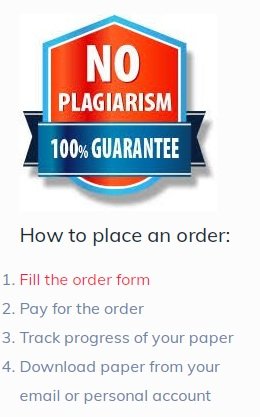Education and Workplace Diversity
| Order ID |
53563633773 |
| Type |
Essay |
| Writer Level |
Masters |
| Style |
APA |
| Sources/References |
4 |
| Perfect Number of Pages to Order |
5-10 Pages |
Description/Paper Instructions
“Education and Workplace Diversity: Enhancing Employment Opportunities”
In today’s globalized and interconnected world, education and workplace diversity play vital roles in enhancing employment opportunities. Education equips individuals with the knowledge and skills necessary to thrive in the job market, while workplace diversity fosters inclusivity and innovation. This essay explores how education and workplace diversity contribute to enhancing employment opportunities and the benefits they offer to individuals and organizations.
Education and Employment Opportunities:
Education serves as a foundation for personal and professional growth, providing individuals with the necessary skills, knowledge, and competencies to succeed in the workforce. A well-rounded education not only imparts subject-specific knowledge but also cultivates critical thinking, problem-solving, and communication skills. These skills are highly valued by employers, as they enable individuals to adapt to changing workplace demands and contribute effectively to organizational goals.
Furthermore, education opens doors to a wider range of employment opportunities. Higher levels of education, such as college degrees or specialized certifications, often correlate with higher earning potential and increased job prospects. Many industries now require specific educational qualifications as minimum requirements for entry-level positions. Thus, investing in education can significantly enhance an individual’s employability and overall career trajectory.
Workplace Diversity and Employment Opportunities:
Workplace diversity refers to the inclusion of individuals from different backgrounds, including but not limited to race, ethnicity, gender, age, religion, and socioeconomic status. Embracing diversity in the workplace is not only a matter of social justice and equality but also has numerous benefits for individuals and organizations alike.
Firstly, workplace diversity fosters a broader range of perspectives and experiences. When employees come from diverse backgrounds, they bring unique insights and ideas to the table. This diversity of thought promotes innovation, creativity, and problem-solving, as individuals approach challenges from different angles. By harnessing these diverse perspectives, organizations can gain a competitive edge and develop more inclusive and effective solutions.
Secondly, workplace diversity promotes cultural competence and global awareness. In an increasingly interconnected world, organizations must navigate diverse markets and engage with customers from various backgrounds. A diverse workforce with cultural competence can better understand and connect with diverse customer bases, resulting in improved customer satisfaction and increased market reach.
Thirdly, workplace diversity has been linked to higher employee engagement and retention rates. When employees feel valued and respected for their unique identities and backgrounds, they are more likely to be motivated, productive, and committed to their work. This, in turn, reduces turnover and associated costs while promoting a positive organizational culture.
Conclusion:
Education and workplace diversity are essential pillars for enhancing employment opportunities. Education equips individuals with the necessary skills and knowledge to excel in the job market, while workplace diversity fosters inclusivity, innovation, and cultural competence within organizations. By embracing these factors, individuals can enhance their employability, secure better job prospects, and achieve long-term career success. Simultaneously, organizations that prioritize education and diversity benefit from a more engaged, creative, and productive workforce. In an increasingly interconnected world, investing in education and embracing workplace diversity is crucial for both individuals and organizations to thrive in the evolving job market.
Education and Workplace Diversity
|
RUBRIC
| QUALITY OF RESPONSE |
NO RESPONSE |
POOR / UNSATISFACTORY |
SATISFACTORY |
GOOD |
EXCELLENT |
| Content (worth a maximum of 50% of the total points) |
Zero points: Student failed to submit the final paper. |
20 points out of 50: The essay illustrates poor understanding of the relevant material by failing to address or incorrectly addressing the relevant content; failing to identify or inaccurately explaining/defining key concepts/ideas; ignoring or incorrectly explaining key points/claims and the reasoning behind them; and/or incorrectly or inappropriately using terminology; and elements of the response are lacking. |
30 points out of 50: The essay illustrates a rudimentary understanding of the relevant material by mentioning but not full explaining the relevant content; identifying some of the key concepts/ideas though failing to fully or accurately explain many of them; using terminology, though sometimes inaccurately or inappropriately; and/or incorporating some key claims/points but failing to explain the reasoning behind them or doing so inaccurately. Elements of the required response may also be lacking. |
40 points out of 50: The essay illustrates solid understanding of the relevant material by correctly addressing most of the relevant content; identifying and explaining most of the key concepts/ideas; using correct terminology; explaining the reasoning behind most of the key points/claims; and/or where necessary or useful, substantiating some points with accurate examples. The answer is complete. |
50 points: The essay illustrates exemplary understanding of the relevant material by thoroughly and correctly addressing the relevant content; identifying and explaining all of the key concepts/ideas; using correct terminology explaining the reasoning behind key points/claims and substantiating, as necessary/useful, points with several accurate and illuminating examples. No aspects of the required answer are missing. |
| Use of Sources (worth a maximum of 20% of the total points). |
Zero points: Student failed to include citations and/or references. Or the student failed to submit a final paper. |
5 out 20 points: Sources are seldom cited to support statements and/or format of citations are not recognizable as APA 6th Edition format. There are major errors in the formation of the references and citations. And/or there is a major reliance on highly questionable. The Student fails to provide an adequate synthesis of research collected for the paper. |
10 out 20 points: References to scholarly sources are occasionally given; many statements seem unsubstantiated. Frequent errors in APA 6th Edition format, leaving the reader confused about the source of the information. There are significant errors of the formation in the references and citations. And/or there is a significant use of highly questionable sources. |
15 out 20 points: Credible Scholarly sources are used effectively support claims and are, for the most part, clear and fairly represented. APA 6th Edition is used with only a few minor errors. There are minor errors in reference and/or citations. And/or there is some use of questionable sources. |
20 points: Credible scholarly sources are used to give compelling evidence to support claims and are clearly and fairly represented. APA 6th Edition format is used accurately and consistently. The student uses above the maximum required references in the development of the assignment. |
| Grammar (worth maximum of 20% of total points) |
Zero points: Student failed to submit the final paper. |
5 points out of 20: The paper does not communicate ideas/points clearly due to inappropriate use of terminology and vague language; thoughts and sentences are disjointed or incomprehensible; organization lacking; and/or numerous grammatical, spelling/punctuation errors |
10 points out 20: The paper is often unclear and difficult to follow due to some inappropriate terminology and/or vague language; ideas may be fragmented, wandering and/or repetitive; poor organization; and/or some grammatical, spelling, punctuation errors |
15 points out of 20: The paper is mostly clear as a result of appropriate use of terminology and minimal vagueness; no tangents and no repetition; fairly good organization; almost perfect grammar, spelling, punctuation, and word usage. |
20 points: The paper is clear, concise, and a pleasure to read as a result of appropriate and precise use of terminology; total coherence of thoughts and presentation and logical organization; and the essay is error free. |
| Structure of the Paper (worth 10% of total points) |
Zero points: Student failed to submit the final paper. |
3 points out of 10: Student needs to develop better formatting skills. The paper omits significant structural elements required for and APA 6th edition paper. Formatting of the paper has major flaws. The paper does not conform to APA 6th edition requirements whatsoever. |
5 points out of 10: Appearance of final paper demonstrates the student’s limited ability to format the paper. There are significant errors in formatting and/or the total omission of major components of an APA 6th edition paper. They can include the omission of the cover page, abstract, and page numbers. Additionally the page has major formatting issues with spacing or paragraph formation. Font size might not conform to size requirements. The student also significantly writes too large or too short of and paper |
7 points out of 10: Research paper presents an above-average use of formatting skills. The paper has slight errors within the paper. This can include small errors or omissions with the cover page, abstract, page number, and headers. There could be also slight formatting issues with the document spacing or the font Additionally the paper might slightly exceed or undershoot the specific number of required written pages for the assignment. |
10 points: Student provides a high-caliber, formatted paper. This includes an APA 6th edition cover page, abstract, page number, headers and is double spaced in 12’ Times Roman Font. Additionally, the paper conforms to the specific number of required written pages and neither goes over or under the specified length of the paper. |
|
|
|
Also, you can place the order at www.collegepaper.us/orders/ordernow / www.phdwriters.us/orders/ordernow
|
| Do You Have Any Other Essay/Assignment/Class Project/Homework Related to this? Click Here Now [CLICK ME]and Have It Done by Our PhD Qualified Writers!! |

|
 |



PLACE THE ORDER WITH US TODAY AND GET A PERFECT SCORE!!!


 GET THIS PROJECT NOW BY CLICKING ON THIS LINK TO PLACE THE ORDER
GET THIS PROJECT NOW BY CLICKING ON THIS LINK TO PLACE THE ORDER

